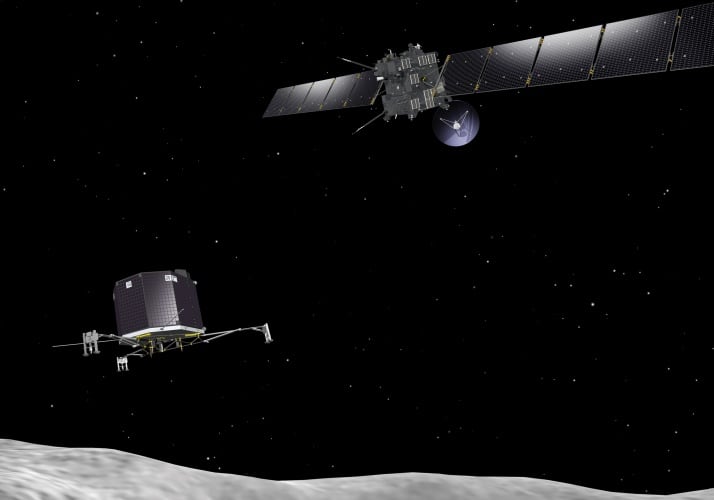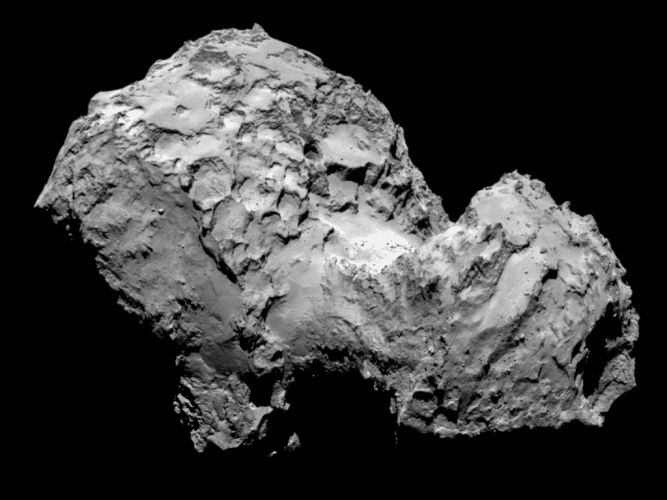It’s been a long journey for Rosetta. We were a little late to the party, first writing about ESA’s comet research mission in 2008, four years after it launched; since then, it’s hurtled three times past the Earth, once past Mars, slingshotted around Jupiter, gone to sleep, woken up and chased after its quarry, Comet 67P/Churymov-Gerasimenko. Over the past couple of months, it’s approached the comet, taken pictures — revealing it to be the shape of a rubber duck — and mapped put a landing place for its probe, called Philae, which will today attempt to land on the comet’s surface. To say ‘attempt’ is a little disingenuous; it’s an one-off exercise, and if it doesn’t work little Philae and everything on board will be lost forever.

Everything about this is remarkable. To borrow some enthusiasm from Professor Brian Cox — he won’t mind, he has plenty to spare — to think that we could send robotic emissaries out to the far reaches of the solar system to answer fundamental questions about the origins of our planet, which could include where the planet’s water came from and how the first complex organic molecules came to arrive on Earth, is astounding.
And we’ve done it by harnessing chemistry, in the fuels that set Rosetta out of the gravity well and onto its course; physics and mathematics from the brains of Isaac Newton and Johannes Kepler, to determine how to use the gravity of our and other planets to place it where it needed to be at the right time; materials science, to make sure it could survive; telecommunications, to send instructions and receive data back; and many other disciplines, not to mention a healthy dose of imagination, because how else could you come up with the idea of firing harpoons into a comet to winch a probe down onto its surface? In other words, it’s all about the engineering.

When Rosetta fires the charges to propel Philae towards the comet, it’ll be working blind, and the team at mission control in Darmstadt will have an anxious seven hours before they know whether the probe has landed. “This is the most difficult landing in space history, like landing a balloon in a city centre on a windy day with your eyes closed,’ comments Matthew Genge, senior lecturer in earth and planetary science at Imperial College London.
Robotic missions may lack some of the sense of drama of crewed missions but all missions are human missions; the teams who built the spacecraft and its instruments and sent it on its way have invested a significant portion of their lives into it and they’ll be gnawing their fingernails right now.
So even if you’re not enthused by the idea of the mission itself and if space technology leaves you cold, it’s impossible not to admire the dedication and the achievement of the engineers who’ve created the Rosetta mission. This is what we can do when we put our minds to it, and it’s stupendous and humbling.










Water Sector Talent Exodus Could Cripple The Sector
Maybe if things are essential for the running of a country and we want to pay a fair price we should be running these utilities on a not for profit...